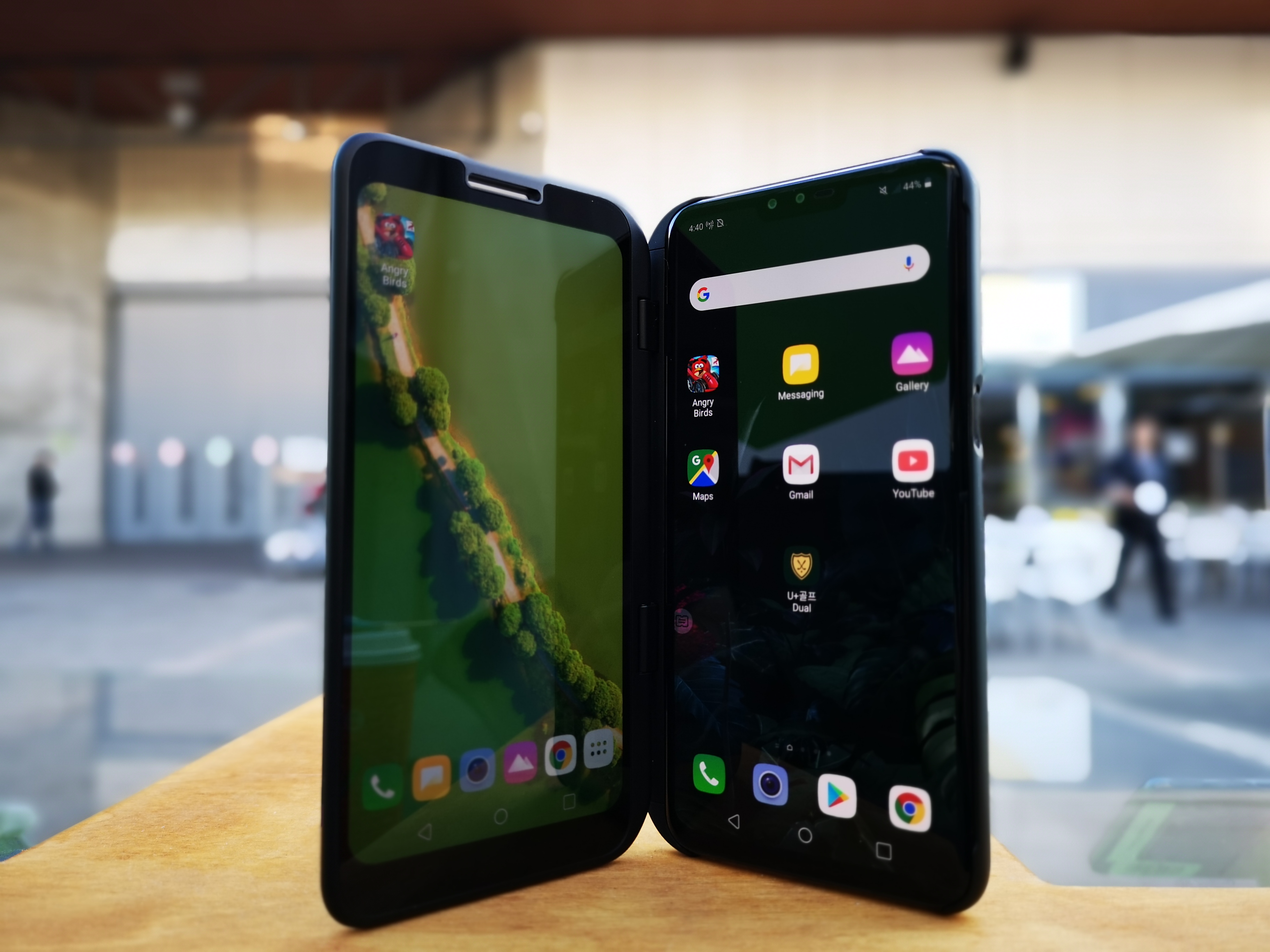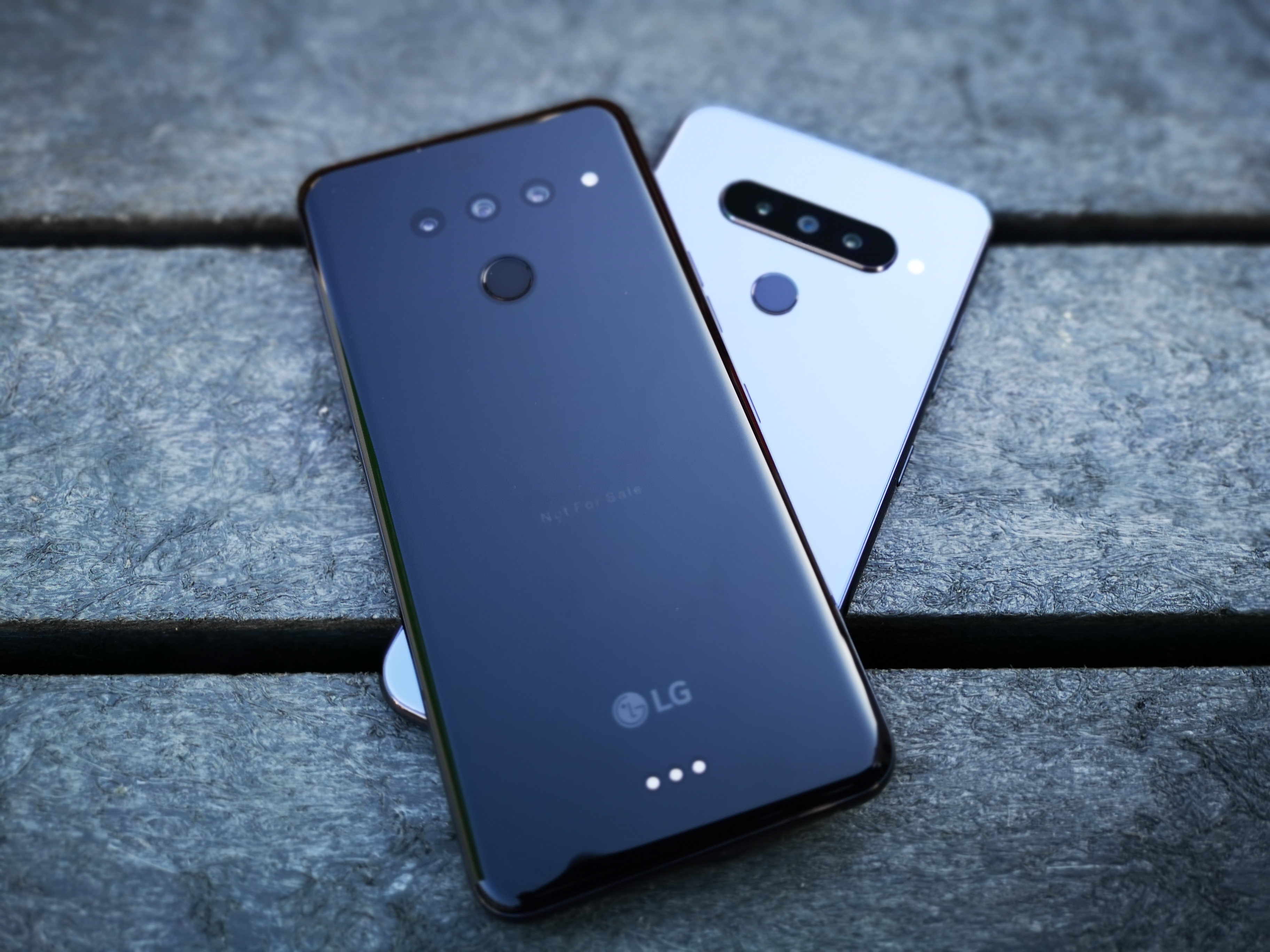LG made some waves just as Mobile World Congress opened its doors this year with a duo of new phones – the G8 and the V50, both bearing its AI-focused ThinQ moniker in their titles.
It’s been a few days since the launch of the products, and LG has kindly let us get up close and personal with both devices away from the show room floor, and clarified some Australian launch details.
We’ve had a little (but not a lot) hands-on time with what will become the Australian variant of the G8 and LG’s first 5G handset, V50 ThinQ. We also had the second screen accessory for the V50 (as you can see in the photos).
The phones share a lot of DNA. LG doesn’t have a recognisable “look” like Samsung or other manufacturers – it’s changed design language a lot over the years. This is the company that a few years ago gave us a phone with a slab of leather on its back, after all. Regardless, both of these phones look and feel good in the hand – they’re dark, glossy and shiny slabs of technology that belie their LG heritage.
Both devices have notched displays, and both have options in the settings menu to hide it, or embrace it by turning the status bar into a kaleidoscope of colours. If you like the notch, LG will let you own it.
Like HMD Global, LG’s products have a dedicated button for launching the Google Assistant — a practice that actually started with the LG G7 last year. It’s a practice we’re happy to see spread throughout the Android ecosystem, although placement of power/volume/assistant buttons varies wildly between the two models.
Given the issues LG has had with quality control (bootloops, construction and more) we’re hoping that this new construction offers a chance for the company to redeem itself on this front.
The LG G8 … s
First, the bad news (well, sort of) – Australia isn’t getting the G8, but we are getting the G8’s sister model, the <em>G8s</em>. The differences aren’t huge on the surface – the G8s has a slightly larger display (6.2 inches to the main G8’s 6.1), slightly lower spec cameras, and either 64 or 128GB storage. It’s also missing LG’s Quad DAC.
The G8s feels like a bit of a compromise that might speak to a play from LG to get their flagship phone back on carriers in 2019 after the G7’s pass from carriers in 2017, but the differences are only things you’d really notice if you put them side by side and asked “hey, why didn’t I get <em>that</em>?”.
The G8 has three cameras on the back, but it’s not really like the Huawei/Leica “triple camera” arrangement we’re so fond of that combines sensor data from three cameras. The UI has distinct buttons for each of the wide / standard / zoom shooting modes, meaning you can only shoot from one sensor at a time. The wide angle camera also shows a significant barrel distortion or fisheye effect, although its something you can remove in post if you desire.
Around from the Z Camera’s Time of Flight sensor offers the G8s’ party piece – gesture control and vein pattern recognition (hand unlock and face unlock). It feels like a feature you’ll either use religiously or not at all, and it was a bit clunky in demonstrations on LG’s stand. Still, the phone doesn’t carry an obvious price premium for the addition of the sensor.

V50 – 5G starts with LG
It’s really hard to write about a 5G phone without a 5G network upon which to run it. The V50 will be coming to Telstra in the middle of the year as one of the first phones designed to take advantage of the carrier’s new super-fast network, but its pricing is still a little up-in-the-air. Being a Telstra device, it’s likely to be sold on-contract.
You can’t talk about the V50 without getting into the second screen. It’s sold as an optional add-on, and it’s said it will set you back around $400 when it launches.
Second Screen Life
The second screen is a case for the V50 with a screen on a hinge that can be closed into a clamshell that feels a lot like a Nintendo DS. It connects to the V50 via Pogo pins on the back of the device, and doesn’t – despite its looks – carry a battery within.
When you attach the screen, an chat-head-like floating icon pops up in the phone’s launcher that lets you power up, shut down or exert some control over the screen. You can make the second screen the primary display if you like, or you can use an LG app to provide game controls on one screen while running a game on the other (think virtual touch-screen game pads).
LG also envisages you using the second screen as a keyboard so you could, for example, compose an email on one display with a keyboard on the other. That mode wasn’t available on the device we tested.









I absolutely love LG phones, but please UPDATE THEM!!
LG foisting the cut-rate G8s on us, instead of the real deal G8, is another example of the annual kick in the face from manufacturers. Lose the high quality audio, and add lower spec cameras than the real G8, and either 64Gb or 128GB storage (What’s the betting we only are permitted to see the 64Gb version?), and you have a resounding example of what should NOT even be called tolerable from manufacturers.
The lack of the quad DAC is very disappointing. Also it’s always a bit annoying to read how much this site loves Samsung in every review. I mean yes LG had the boot loop issue in the past so it’s fair enough to bring it up. But Samsung had exploding phones that you would never see in a review for the S10..
Selling a reduced function version of the G8 in Australia continues the tradition of giving us a NQR phone. I purchased a G6+ from Hong Kong with all the good audio bits rather than a G6 from here, it actually cost less and has all the Australian frequency bands. That went to another family member and I did the same again and got the G7+ rather than the Australian model. Looks like that will continue into the future unless I change brands! The differentiator has always been the Quad DAC and aptx-HD and now LDAC coupled with a pair of… Read more »
Agree – why even bother buying the G8 if it doesnt have the Quad Dac? I currently own and run a v30+ and love the phone, however the V30+ is sans notch. Cant see any reason to upgrade to the V50 in the near future given scarcity of 5G coverage in 2019 (with only marginal camera improvements, and presumably poorer battery performnce on the new model).
4000mah battery and software are the only real reasons. But the same can be said for most smartphones